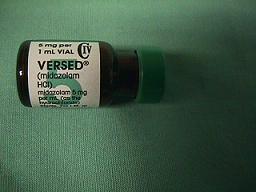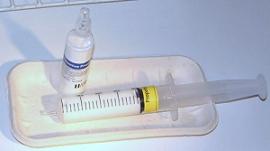|
General AnesthesiaGeneral anesthesia is the term given to describe the utilization of a combination of injectable drugs with inhalant agents to induce and maintain a deep level of unconsciousness during the performance of a surgical procedure.
This type of anesthesia has long been the benchmark in this field, and until recent years where other anesthetic variations have come into wider use and popularity, was used almost universally in the surgical environment. Why use general anesthesia? There are several advantages to the use of a general anesthetic: The patient is unconscious, so there is no psychological demand placed upon him/her. General anesthesia allows for complete control of the airway, breathing and blood pressure by the anesthesia caregiver. It allows for surgery to be performed in different areas of the body simultaneously. It enables the patient to remain motionless for extended periods of time.
So, what are the components of a general anesthetic? First, the intravenous drugs: There are many different types of intravenous drugs used in a general anesthesia scenario. Some are narcotics, some anti-anxiety agents (anxiolytics), while others may be anti-nausea, and sedative/hypnotic agents. Some medications control blood pressure, while others are designed to dry up secretions in the mouth and throat.
These agents are typically in liquid form until placed into an anesthesia machine where it becomes a vapor to be inhaled. The flow of these “gases” is strictly controlled and is usually administered in combination with pure oxygen. Each type of inhalant agent works a bit differently to achieve various results.

Of course, nitrous oxide (aka "laughing gas")is still routinely used. It is typically administered as a percentage of a mixture with oxygen and never gives "straight". One drug which can be used both for anesthesia or sedation levels of consciousness is called Propofol. The brand name is Diprivan. Diprivan is a white, milky, "emulsion" that, when given intravenously, can produce a quick-onset anesthesia, or when utilized with an "infusion pump" can produce and maintain a steady dream state or sedation during procedures that don't require a deep level of anesthesia.
I: Pre-medication II: Induction III: Maintenance
Leave General Anesthesia; return to Home Page
|

"We hope you enjoy your journey through Bone and Joint Pain.com"
 Next the Inhalants:
Next the Inhalants:
 There are essentially three main stages of general anesthesia:
There are essentially three main stages of general anesthesia:
